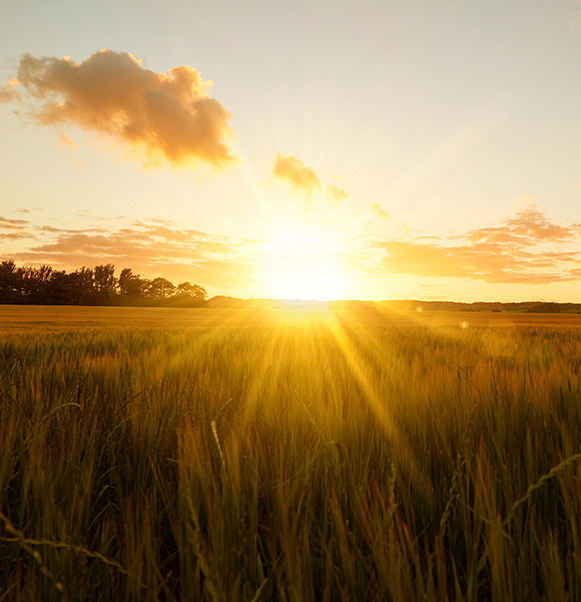

How the world is being powered by renewables
How the world is being powered by renewable energy
Renewable energy is at the heart of the energy transition to a more sustainable energy future. It quite literally has the power to help build a more sustainable world – from helping reduce global carbon emissions to helping clear the air.
Read on to learn more about why and how the world is moving towards a renewable future.
How energy sources have changed over time
Since the Industrial Revolution, coal has been a major fuel source used to power the UK. And as recently as 2012, cheap coal still made up more than a third of total electricity generation here1.
But burning coal releases harmful gases and pollutants into the air – impacting both air quality and the environment. The environmental impact of UK energy production and consumption has now changed for the better, in a big way – towards renewable energy.
In 2019, the UK generated more energy from zero carbon emission sources than fossil fuels and in 2020 we set a record for the nation’s longest coal-free period, going 67 days without using coal2. What’s more, the contribution of renewables to the electricity mix increased to a record high of 47% between January and March of the same year3. This is a drastic increase from the single-figure totals of around 7% in 20104 – showing how far UK renewables have come in the past 10 years.
At E.ON, we’ve helped to drive this change from our first onshore wind farm in 1991 on Anglesey to the UK's first offshore wind farm near Blyth in 2000. And in the last 10 years alone, we’ve invested over £3.3bn into UK renewables.


What is renewable energy?
Renewable energy means it has been produced from natural sources, including the sun, wind and biomass, which are infinitely renewable. By contrast, fossil-fuel resources such as coal or oil are finite, as their reserves are limited.
There are four main UK sources of renewable energy: solar, wind, biomass and hydro.
- Solar uses photovoltaic (PV) panels to capture energy from the sun during daylight hours, which can then be stored in batteries for use when it's needed. Panels are often placed on the roofs of buildings such as homes or in larger scale solar farms.
- Wind power relies on turbines, often installed in large wind farms, either onshore or out at sea. And smaller turbines can power communities and industrial sites.
- Biomass energy is generated from burning any organic, renewable material such as wood, plants or household waste to make electricity or heat — like at our Blackburn Meadows combined heat and power (CHP) plant.
- Hydroelectric power comes from water, using flows to spin turbines that generate electricity. This is often achieved at scale behind enormous dams, but can also harness tidal wave power off the coast, as well as currents in rivers.
Other fast-developing sources include heat pumps – as an environmentally friendly alternative to gas and oil-fired heating systems —and hydrogen, including fuel cells, for industrial and transport uses.


What is powering this shift in energy sources?
Part of the motivation behind the shift toward renewable energy is the push for cleaner air. Public Health England have declared air pollution as the biggest environmental threat to UK health, estimating that around 28,000 to 36,000 deaths a year are caused by long-term exposure to air pollution5.
Cleaner air is something we can all work towards, from reducing your home’s impact on air pollution to fighting air pollution in the workplace. And renewable energy can help, producing fewer carbon emissions and other harmful pollutants than fossil fuels.
The climate emergency is also front of mind for countries and people alike. In the UK, the Government has signed the Paris Agreement, committed to cut emissions by 80% by 20506 and became the first country to declare a climate emergency. Additionally, 75% of our electricity7 must come from clean energy sources by 2030, only nine years away.
The good news is the cost of renewables is falling. Generating power from solar and wind is now, on average, cheaper than continuing to use existing coal plants8. And another key driving factor is investment – the world invested a record $501.3 billion in the decarbonisation of the energy system in 2020, an increase of 9% on the previous year9.


What are the benefits of using renewable energy sources?
There are many benefits of switching to renewable energy, but there are three core reasons to embrace sustainable low-carbon lifestyles:
- People — renewable energy generates less air pollution than fossil fuels meaning the associated health risks are greatly reduced;
- Planet — it has a small carbon footprint which helps to fight climate change, limit global warming and sea-level rise, and protect nature;
- Profit — the cost effectiveness of generating renewable energy can boost economic growth10 and by generating your own renewable energy you can even save money on your energy bills.
What does the future look like?
Looking ahead, the ongoing decarbonisation of the UK energy grid will see decentralised and distributed energy generation increase from a diverse mix of sources. The future will likely be one of fewer big power plants, and more small, smart local solutions. And by 2050, there is evidence the world could be 100% powered by renewable energy11.
We’re already helping our customers to lead this transition – offering solar panels, battery storage and air source heat pumps. And we provide our customers' homes and eligible businesses12 with 100% renewable electricity13, at no extra cost. What’s more, we’ve been named ‘Best deal for you’ in the latest Uswitch Energy Awards in the larger supplier category – proving that sustainability at home needn’t cost the earth.
Happily, becoming part of the renewable revolution has never been easier.
1. Gov.uk: Special feature - Coal in 2012
2. Department for Business, Energy & Industrial Strategy: Energy Trends September 2020
3. Department for Business, Energy & Industrial Strategy: UK Energy Statistics, Q1 2020
4. Gov.uk: Renewable electricity capacity and generation (ET 6.1 - quarterly)
5. Gov.uk: Public Health England publishes air pollution evidence review
6. Department for Business, Energy & Industrial Strategy: The UK's Draft Integrated National Energy and Climate Plan (NECP)
7. HM Government: The UK Low Carbon Transition Plan - National strategy for climate and energy
8. International Renewable Energy Agency: Renewables Increasingly Beat Even Cheapest Coal Competitors on Cost
9. BloombergNEF: Energy Transition Investment Hit $500 Billion in 2020 – For First Time
10. International Renewable Energy Agency: Renewable energy benefits: measuring the economics
11. Energy Watch Group: Global energy system based on 100% renewable energy
12. Eligible businesses are SME customers that sign a contract directly with E.ON.
13. Electricity backed by 100% renewable sources. Electricity sourced from E.ON's renewable assets, agreements with independent UK generators and the purchase of renewable electricity certificates. The electricity supplied to your home comes from the National Grid. Find out more at eonenergy.com/renewable.


Our blog
Read our latest blogs to discover how E.ON is leading the energy transition through smart and sustainable solutions.


Solar panels
Save money on your energy bills by generating your own power from the sun.


How can you benefit from solar energy?
Solar energy is the world’s fastest growing energy technology. To help you decide whether it’s right for you, read our blog about the benefits of solar energy.
